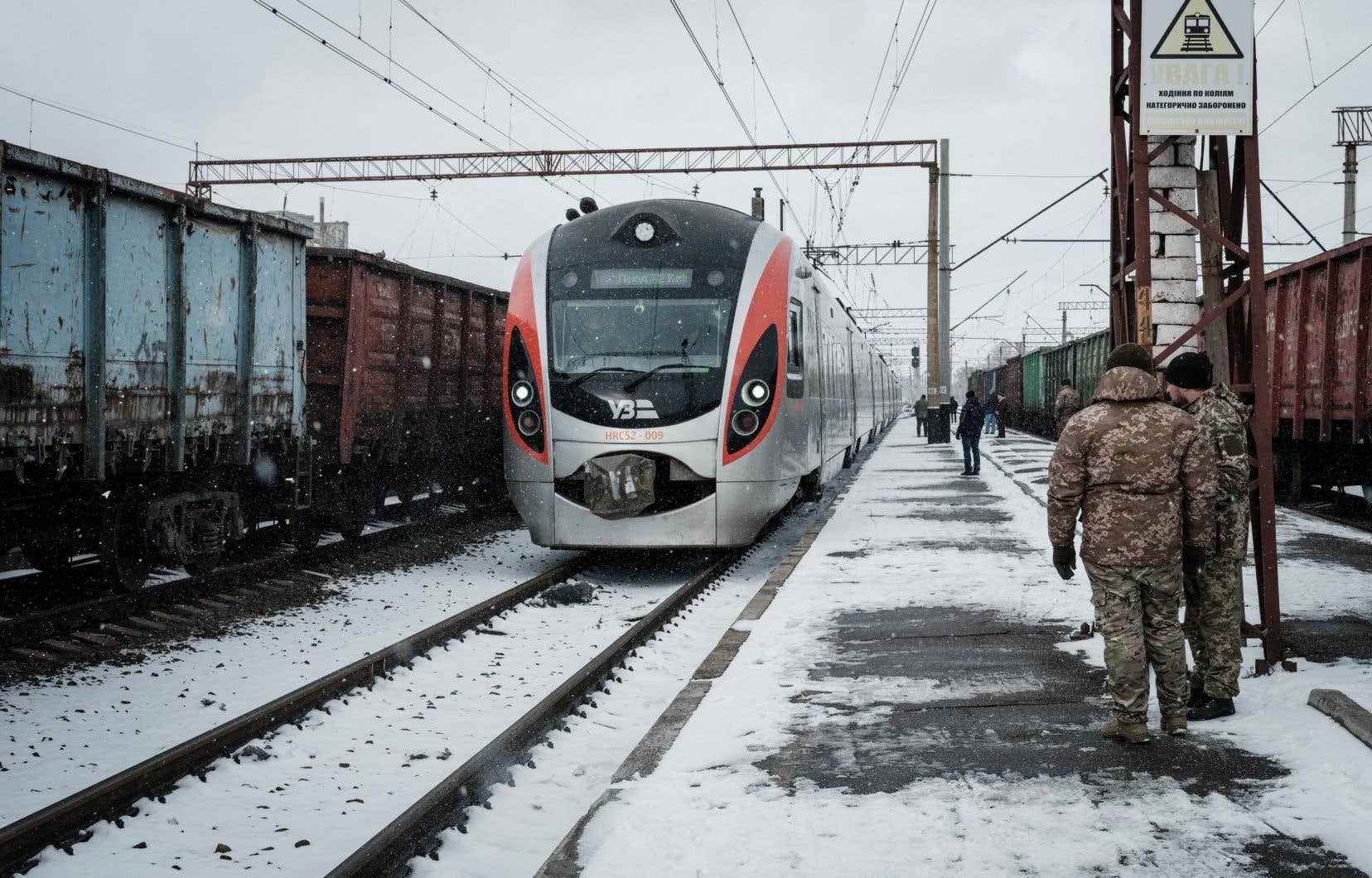Ukraine wants Canada to lend its expertise — and donate crucial rail parts — to keep its ailing passenger and freight rail system going as landmines and missile strikes threaten to block the country’s lifeline .
The rail system has been vital to the war effort, and has been since the early days of the invasion that began a year ago this week.
Millions of people have used the trains to flee occupied cities and take refuge in neighboring countries. Thousands of wounded soldiers and civilians have also been transported by train to hospitals in safer parts of the country.
The railway is also Ukraine’s way of getting aid and troops to frontline areas, where the fighting is most intense, and bringing people and supplies back to territories returned to Ukrainian control. after the departure of the Russian occupying forces.
Constant attacks on railways and other critical infrastructure have rendered 20% of the system unusable, according to Oleksandr Pertsovskyi, CEO of transport company Ukrainian Railways. He added that more than 300 railway workers were also killed.
“Very often they have to leave right after the shelling has ended, when it’s still dangerous, to start repairs,” he said in an interview with The Canadian Press from kyiv, the capital of Ukraine.
More modern
The state-owned railway company, known in Ukraine as Ukrzaliznytsia, operates almost like a paramilitary unit to ensure the movement of essential goods and people across the vast country, Pertsovskyi said.
But Ukraine is looking to do more than fix what’s been damaged: the company wants to build a better, more modern system, and it’s asked for Canada’s help.
“Canada is a big industrial manufacturer, so of course there could be certain types of equipment or certain technological solutions,” he argued.
One of its aims is to make the track gauge — the distance between the two rails — more compatible with the norm in the rest of Europe. That would be no small feat, given that there are 20,000 km of track in Ukraine.
The company also hopes to replace the destroyed stations with others that will better serve Ukrainians after the war, including those living with disabilities.
“Unfortunately, there are so many people, even young people, who are amputated because of this war, and our main task is to make our railway facilities fully accessible,” Pertsovskyi explained.
He said Canada could provide equipment, engineering and advice to rebuild damaged buildings to accessibility standards.
Canada’s Transport Minister Omar Alghabra helped broker an agreement last fall between Canadian rail companies and Ukrainian railways in response to a request from the Ukrainian government to support system resilience and rebuilding, including sourcing parts from Canadian manufacturers.
“Our members are gathering equipment and expertise to help our Ukrainian friends keep the trains moving, despite Russian incursions, while planning for the future,” the executive vice president of the agency said in a statement. ‘Railway Association of Canada, Caroline Healey.
Human cost of operations
The Railway Association of Canada represents Canada’s three major railway companies, Canadian National, Canadian Pacific and VIA Rail, as well as Canadian railway manufacturers.
The association works to determine which parts Ukraine needs most and where to find them in Canada.
Pertsovskyi said Ukrainian workers had already repaired hundreds of kilometers of tracks and nearly a dozen bridges that had been damaged during the war. He clarified, however, that sometimes these are only temporary solutions.
The most notable example might be the large bridge between Kyiv and the nearby suburb of Irpin, which was occupied by Russian forces at the very start of the war. Ukrainian forces destroyed the bridge over the Irpin River that connected the two cities to prevent Russian tanks from advancing into the capital.
“It’s like major destruction,” Pertsovskyi said. The river is under the bridge and it was completely destroyed. »
After Russian troops were pushed back from the area, it took the country less than a month to restore commuter rail service, he added. Meanwhile, the bridge between the port city of Odessa and the neighboring region of Bessarabia has been attacked more than 30 times.
“They keep attacking it and (they) are still not able to completely stop the operation,” Pertsovskyi said.
This work has an enormous human cost. Landmines left behind after the Russians left make repairs incredibly dangerous for workers.
Missile attacks on power stations have also made it difficult to keep trains running, although deploying diesel trains during blackouts is now quick and smooth, he said.
Stations such as Lviv have been turned into what Mr Pertsovskyi calls “invincibility fortresses”, where city residents can come to warm up, charge their electronics and sleep on station benches when the bombardments Russians cut electricity in some communities.
Although the refugee and social services tent village that used to be outside the Lviv train station is now largely packed up and gone, one tent remains. This is where volunteer Roman Mazur sleeps when he’s not handing out hot tea to travelers leaving or returning to Ukraine.
Inside, the tent is filled with boxes of food and other supplies to help people along their journey.
The statues lining the station’s ornate entrance are shrouded to protect them from damage in the event of nearby explosions, but trains still run on time.
As more territory is reclaimed, Pertsovskyi hopes to repair more rail lines leading to those towns and communities.
“Reviving occupied cities is now the top priority,” he said.
